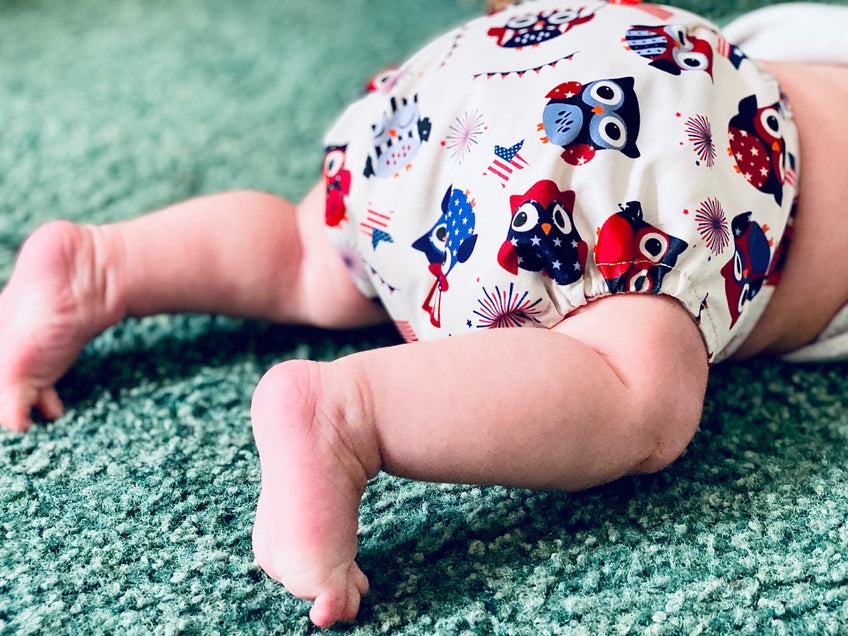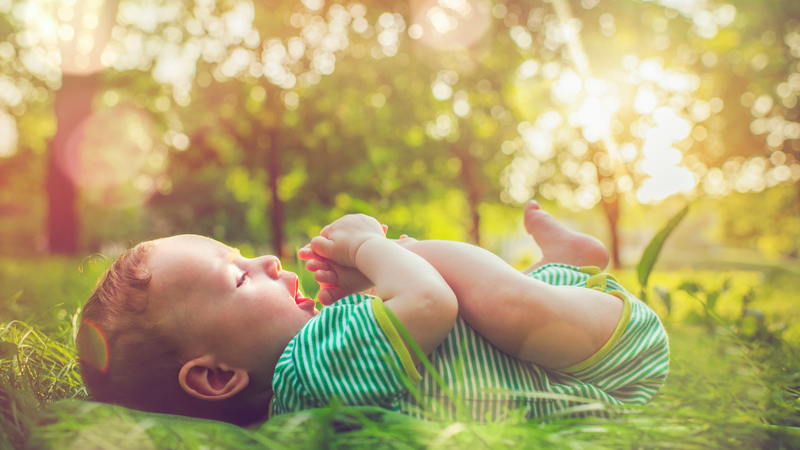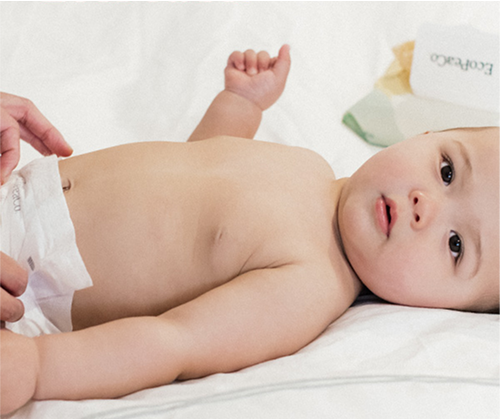While you might think it would be easy to decide which baby wipes to use, there’s actually a lot to consider when deciding what baby wipes will be best for your baby. Fragrance, the presence of irritants, cost, whether you can buy in bulk, the environmental impact of the baby wipes, and more can all play a part in your decision. Parents want to find the safest baby wipes that meet their family's unique needs.
To help you choose which baby wipes to buy and support you in answering questions like, “can I use scented wipes on my newborn?”, we’ve collected must-have tips for this decision.

How to choose baby wipes that meet your needs
Because not all baby wipes are created equal, there are a few key things to consider to find baby wipes that work for your little one.
- Price: As you’ll be using an average of 1,110 wipes per month (!) during baby’s first year, the cost of the baby wipes you choose is an important factor. When doing the math, you can multiply the cost of one pack of wipes by 15 to get an estimate of the monthly cost of the wipes for baby’s first year.
- Bulk ordering: If purchasing 15 packs of baby wipes a month sounds expensive, know that there’s a great way to cut costs: buying in bulk. Finding a brand that allows you to purchase bigger quantities of baby wipes for a discounted cost can seriously reduce the monthly cost of baby wipes. With Eco Pea Co., you can save up to 20% on baby wipes when you sign up for regular deliveries. Bonus: you're never caught without wipes, which can be a real disaster!
- Environmental impact: When looking for baby wipes that are eco-friendly, look for ones that mention they're biodegradable wipes. The prime benefit of biodegradable wipes is that they won’t sit in a landfill nearly as long as their non-biodegradable counterparts – they’ll break down much sooner. It’s also wise to look for wipes that are vegan, cruelty-free, made without gluten, and made with a plant-based material like bamboo, as it’s one of the most renewable resources.
- Ingredients that are good for sensitive skin: While almost all baby wipes are non-toxic, not all wipes are great for baby’s with sensitive skin. And since baby wipes will be touching your baby many, many times a day, it’s ideal to find some specifically made with sensitive skin in mind. The best option is to find hypoallergenic wipes that are dermatologist-tested, since they have a lower chance of causing an allergic reaction because they contain no chemicals and additives.
Searching for wipes that check a few boxes on this checklist can help ensure you end up with an affordable, quality product.
What do you do with baby wipes containers?
As you learn more about how to choose baby wipes, you’ll find that they come in a variety of containers. The most common type of container for baby wipes is a plastic box with a flip-up lid. The upside? This type of container helps seal in moisture and allows you to refill them. The downside? More plastic. Some brands allow you to purchase a large bag of wipes that you can then transfer into the refillable container for easy retrieval. The cost you spend on this bag of refills is typically less than you’d spend buying wipes in new containers. When purchasing wipes, be sure to read the label carefully to ensure you’re purchasing wipes in a new container, or a refill bag, depending on what you need.
If you’re wondering how to refill baby wipes containers, the answer is simple; remove the top of the container, take a stack of wipes from the refill bag, close the lid, and bam, you’re done.
Don’t want to bother with refilling the container, or really hate the extra plastic that comes with it? Try a flexible plastic bag that has a rigid flip-up top, like the one used by EcoPea. This type of container also seals in moisture and doesn’t require you to mess around with refilling it. Plus, it takes up way less space when throwing it in a diaper bag.
If you've got extra baby wipes containers lying around, here are a few ways to repurpose a baby wipes container:
- Put a few flexible baby wipes containers in the diaper bag to store dirty diapers in until you reach a trash can. This is especially convenient when you’re on the go!
- Store small toys in empty plastic baby wipes containers to help keep small pieces together.
- Keep art supplies organized by keeping crayons in one empty baby wipes bag, markers in another, and so on.
- Since baby wipes containers hold in moisture, they’re a great option for play dough storage.
- Manage loose Band-Aids by storing them in a baby wipes container.
- Loose change taking over your car? Pop a flexible baby wipes container in your glove compartment to toss change into.
What are the safest baby wipes to use?
With so many baby wipes on the market, it can be tricky to determine which ones are safest for your baby, especially when they contain so many perplexing ingredients.
Here at Eco Pea Co., we're pretty transparent when it comes to what's in our products. Here's a list of the ingredients you can find in our baby wipes:
Water (aqua). Water is a crucial ingredient in baby wipes as it’s a carrier and diluent for the other ingredients. Eco Pea utilizes extensive filtration to make sure only high-quality water is in our wipes.
Polyhexamethylene Biguanide HCL. Used to prevent the growth of harmful bacteria and mould and keep product safe to use and smelling fresh.
Sodium Benzoate. A preservative that prevents the deterioration of our wipes, sodium benzoate is an odorless, crystalline powder made by combining benzoic acid and sodium hydroxide. Sodium benzoate is often used in place of potentially harmful ingredients like phenoxyethanol, benzyl alcohol, and parabens.
Decyl Glucoside. A mild cleaning agent which helps clean skin.
Ethylhexylglycerin. A skin conditioning agent known to improve skin appearance and deodorize. Derived from vegetable glycerin.
Hydroxyacetophenone. A skin conditioning agent known for it's antioxident and skin soothing properties.
Gluconolactone. This very gentle preservative has antimicrobial and antiseptic properties, working wonders at inhibiting the growth of bacteria on our wipes. It’s also been found to hydrate the skin, is ideal for sensitive skin, and has antioxidant properties, meaning it can neutralize free radicals which can be harmful.
Citric Acid. A mild, organic acid, citrus acid is effective at regulating the pH in our wipes, which supports healthy infant skin by helping to maintain its natural pH balance. Essentially, it helps to reduce the occurrence of diaper rash.
Aloe Barbadensis Leaf Extract. The botanical name for aloe vera, aloe barbadensis, is a powerful, natural skin-conditioning agent that has been used medicinally for centuries, as it has wound-healing properties. It’s especially beneficial as a baby wipe ingredient because it has a moisturizing and anti-inflammatory effect, and leaves behind a protective layer on the skin after drying. This protective layer can be supportive in the prevention and/or healing of a diaper rash.
Chamomile Recutita Extract. Commonly known as Chamomile flower, which is known to sooth skin and contribute to lessoning redness.
Cucumis Sativus (Cucumber) Fruit Extract. Commonly known as Cucumber, which is known to be hydrating to skin.
Silicone Antifoam Emulsion. A blend of water, PPG-34 and Dimethicone Silylate prevent foaming in solution, reducing the risk of pack leakage and product spoiling.
If you find baby wipes that have these ingredients, you’ve likely found a winner.

Can I use scented baby wipes on my newborn?
While it’s tempting to purchase scented baby wipes, especially because they’re primarily used to clean up smelly materials (which your baby's diaper is definitely going to be the culprit of), it’s best to avoid wipes that contain a fragrance. This is especially important if your baby has sensitive skin. The chemicals used to produce the fragrance in scented baby wipes can irritate the skin, especially when used on more sensitive areas of the body.
Additionally, the chemicals used to create synthetic fragrances often include phthalates, which are endocrine disruptors that can impact fertility and lead to greater susceptibility to endometriosis and some cancers.
It’s also important to note that just because you don’t see the term “phthalates” on the ingredients list doesn’t mean they’re not there. If you see the term “fragrance,” “parfum,” or “perfume” on the ingredients list, phthalates are likely in the wipes.
To be safe, opt for baby wipes that have the term “fragrance-free” on the label.
Should I buy baby wipes in bulk?
As is the case with many products, the more you buy, the less you’re paying per unit. This is especially true with baby wipes. If you buy baby wipes in bulk, you’re likely going to spend much less than if you just buy a container here and there.
With that said, it’s best to not buy in bulk until you’ve found a brand of baby wipes you like. You don’t want to be stuck with 15 packages of a brand of baby wipes that cause a diaper rash on your baby. But, after you find the brand for you, you can score major savings by signing up for regular bulk deliveries. And during baby’s first year, it’s almost guaranteed that the wipes won’t go to waste.
Taking the time to utilize these baby wipe purchasing ideas can be well worth it, since this is a product that will be touching your baby’s skin often.
The good news is, once you find the right option for you, you won’t have to put too much more thought into this important purchase. Good luck!



